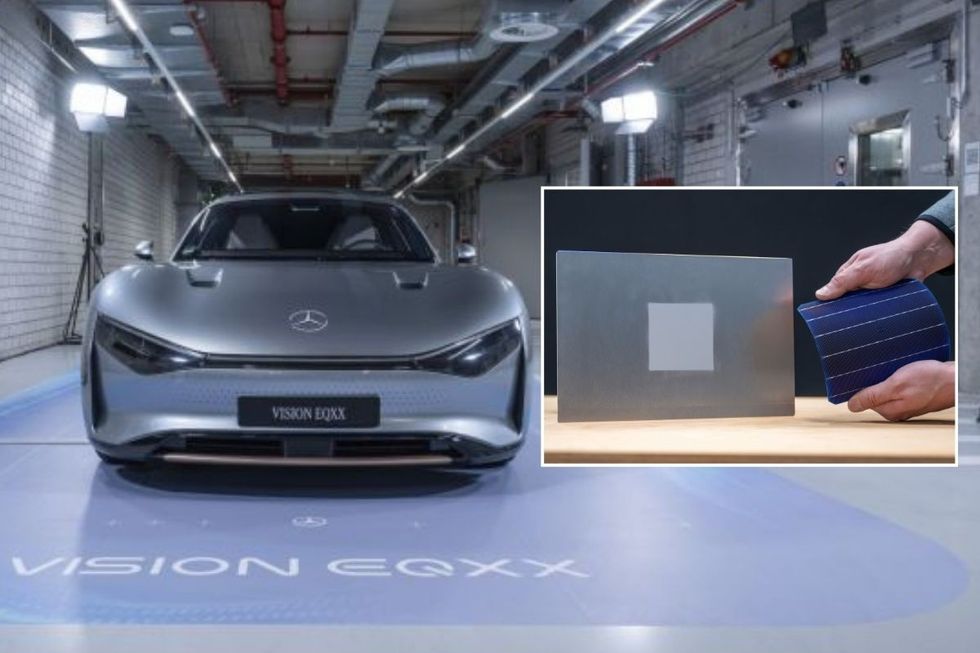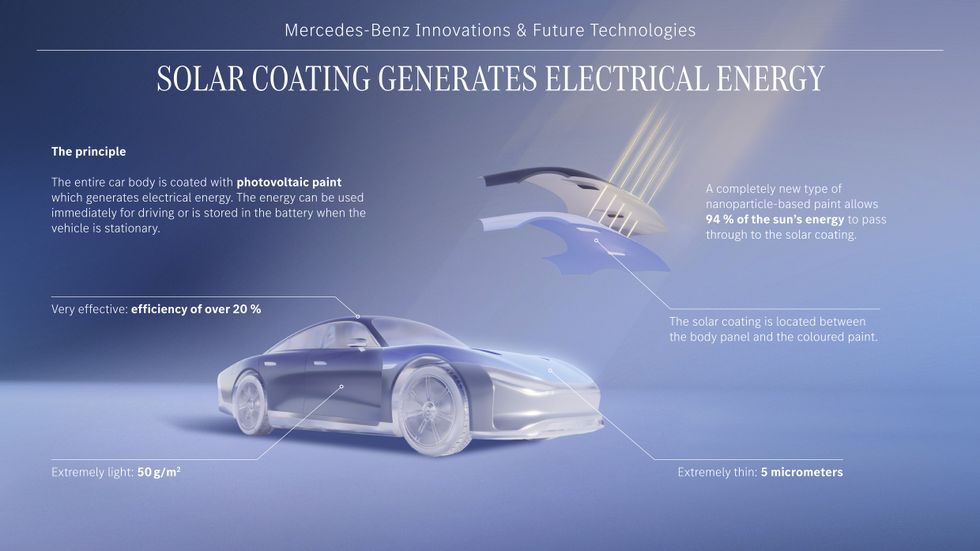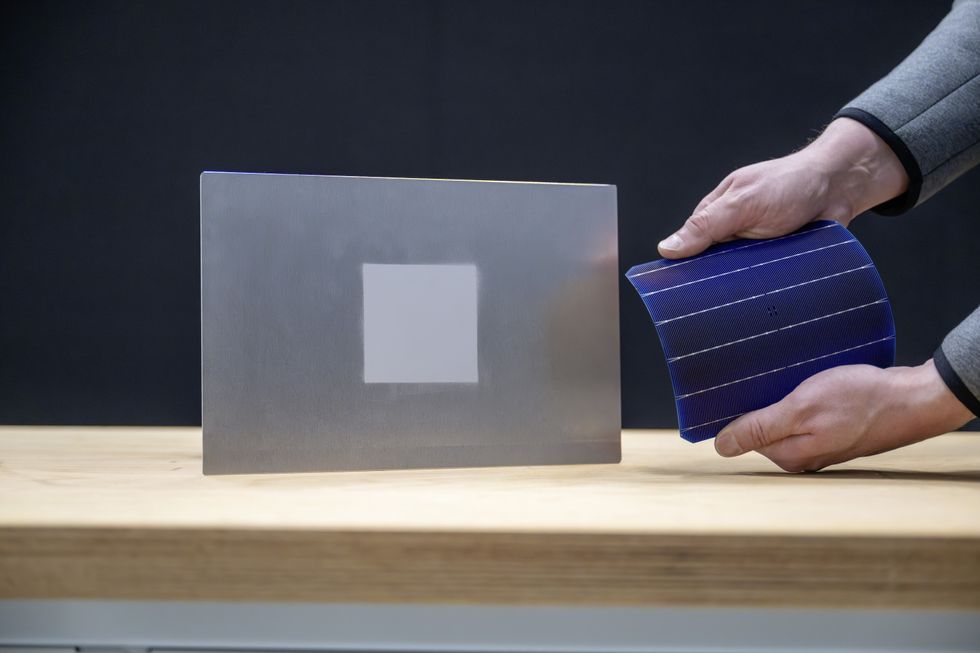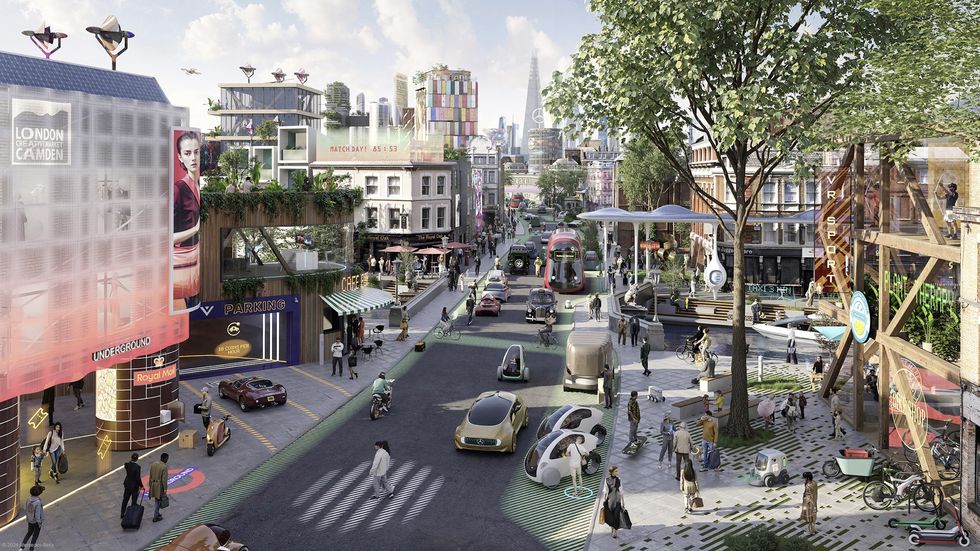Mercedes-Benz is pioneering a revolutionary solar paint technology that could transform the future of electric vehicles and boost battery range in electric vehicles.
The innovative solar modules can be applied seamlessly to vehicle bodywork, functioning like an ultra-thin layer of paste at just five micrometres thick – significantly thinner than a human hair.
Weighing just 50 grams per square metre, these high-efficiency solar cells boast an impressive 20 per cent efficiency rate.
When applied to an area of 11 square metres, equivalent to the surface of a mid-size SUV, the technology could generate enough electricity to power up to 12,000 kilometres of driving annually under ideal conditions.
Do you have a story you’d like to share? Get in touch by emailing[email protected]

The revolutionary technology could lead to massive performance upgrades for electric vehicles
MERCEDES-BENZ
The system remains permanently active, generating energy even when the vehicle is switched off, with power either being used directly for driving or stored in the high-voltage battery.
This breakthrough could significantly enhance electric range whilst reducing the need for frequent charging stops.
The solar paint’s effectiveness varies based on geographical location, sunlight intensity, and shade levels.
In the German city of Stuttgart, where Mercedes-Benz drivers typically cover 52 kilometres daily, approximately 62 per cent of this distance could be powered by solar energy alone.

The solar paint technology has been praised for its innovation
MERCEDES-BENZ
The technology shows even more promising results in Los Angeles, where solar radiation levels could potentially cover 100 per cent of average daily driving distances.
Any surplus energy generated could be fed directly into home networks through bidirectional charging.
Instead, it utilises non-toxic and readily available materials, making it both easier to recycle and more cost-effective to produce than conventional solar modules.
Mercedes-Benz researchers are currently working to adapt the solar paint for use on all exterior vehicle surfaces, regardless of their shape or angle.

The solar paint will depend on light intensity
MERCEDES-BENZ
Markus Schäfer, Member of the Board of Management of Mercedes-Benz Group AG and Chief Technology Officer, emphasised the company’s commitment to meaningful developments.
He said: “Innovative strength was and is among the most important driving forces of Mercedes-Benz. Our brand has been shaping automotive progress for almost 140 years with pioneering technologies.
“For us, innovation only makes sense if it offers our customers real added value. Their perfect composition is what makes a Mercedes a Mercedes.”
The German car manufacturer also stated that London’s cityscape could undergo a dramatic transformation towards sustainability by 2040.
LATEST DEVELOPMENTS:

What a reimagined London could look like in 2040
MERCEDES-BENZ
Traditional buildings would stand alongside new structures, complemented by increased green spaces including trees, parks, and living roofs and façades.
The transport system would see significant changes, with reduced car traffic giving way to cycle paths and enhanced public transport networks.
The streets would be navigated by robotaxis, while electric vans and cargo bikes would handle last-mile deliveries.
Almost all vehicles in this future London will be powered by electric or electrified drivetrains, creating a cleaner, more sustainable urban environment.